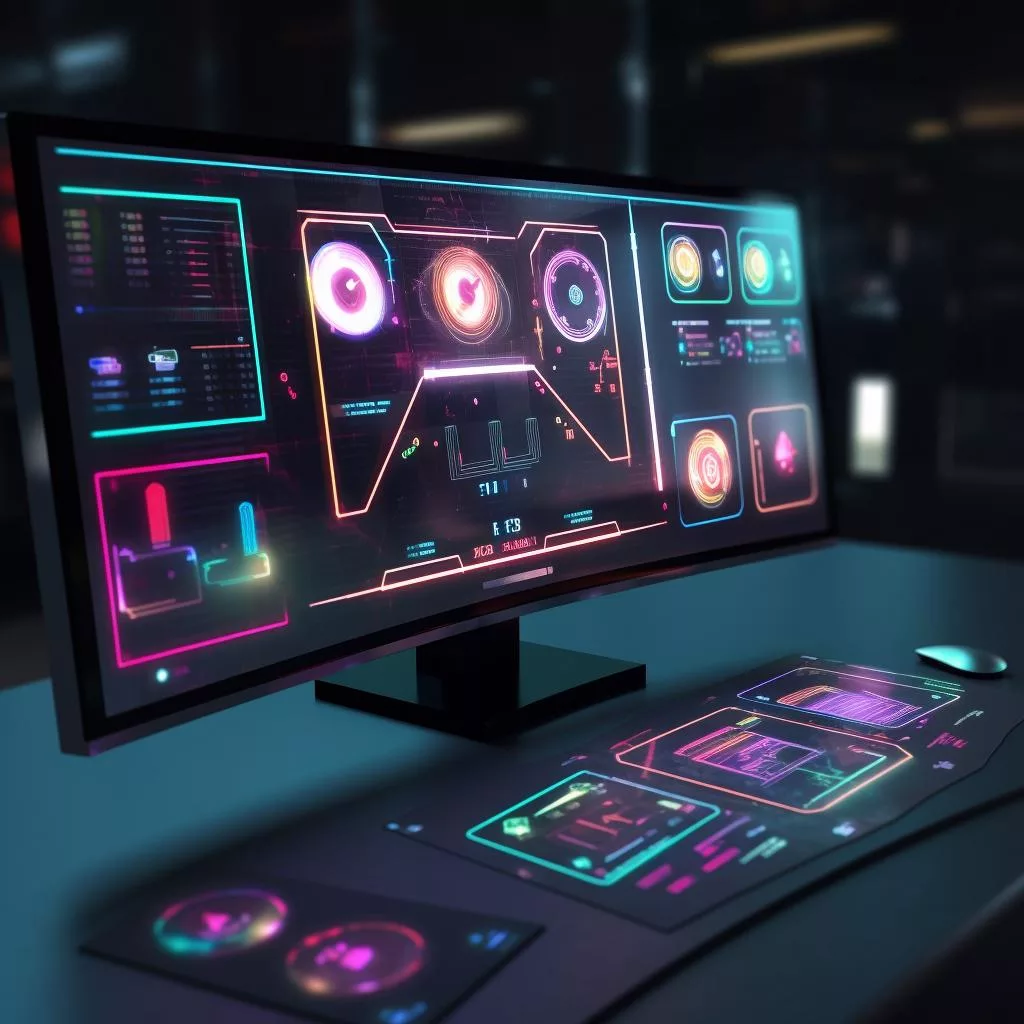KEY TAKEAWAYS
- The cost of creating an NFT can vary widely depending on factors:
- Blockchain platform used
- Complexity of the NFT
- Cost of creating the digital asset
- Storage and hosting
- Some popular blockchain platforms and their qualities are:
- Ethereum: higher transaction fees
- Binance Smart Chain: faster processing times
- Also consider expenses such as:
- Account fees
- Private key management
- Storage costs
- Marketplace fees
Introduction to the Cost of an NFT

NFTs, or non-fungible tokens, have emerged as a popular form of digital asset, offering ownership and authentication of digital works. Aspiring creators often wonder: how much does it cost to create an NFT? However, the average cost is not straightforward and can vary depending on various factors.
This article aims to explore the factors influencing the cost of creating an NFT, such as the blockchain platform used, the complexity of the NFT, the cost of creating the digital asset, and the expenses related to storage and hosting.

Up Front Costs of Creating an NFT
NFTs, or non-fungible tokens, have taken the world by storm in recent years, with their unique ability to represent ownership and authenticity of digital assets. The rise of NFTs has opened up new possibilities for creators and collectors alike, but one question that often arises is how much it costs to create an NFT. In this article, we will dive into the various costs involved in creating an NFT, but I think we can all agree, it is far less risky than shorting crypto on Robinhood!
Creation Costs
The first cost associated with creating an NFT is the NFT cost of actually creating the digital asset that the NFT will represent. This could include anything from a digital artwork or music track to a tweet or a meme. The cost of creating these assets can vary widely, depending on the quality and complexity of the asset. For example, a simple meme could be created for free using basic image editing software, while a high-quality digital artwork could cost thousands of dollars to create.
Minting Costs
Once the digital asset has been created, the next step is to mint it as an NFT on a blockchain platform. This involves creating a unique token on the blockchain that represents ownership of the digital asset. The cost of minting an NFT can vary depending on the platform used. Some platforms charge a flat fee per NFT minted, while others charge a percentage of the sale price of the NFT.
Gas Fees
Gas fees are a type of transaction fee that is paid to miners on the blockchain network to process transactions. When minting an NFT, gas fees are incurred for each transaction on the blockchain network. The cost of gas fees can vary widely depending on the blockchain platform used and the current demand for transactions on the network. In some cases, gas fees can be very high, making it costly to mint an NFT.
Storage Costs
Once the NFT has been minted, it needs to be stored on the blockchain network. This requires a certain amount of storage space on the network, which incurs a cost. The cost of storage can vary depending on the blockchain platform used and the size of the NFT file.
Marketing and Promotion Costs
Finally, once the NFT has been created and minted, it needs to be marketed and promoted to potential buyers. This can involve advertising on social media platforms, attending NFT events, and working with influencers or galleries to showcase the NFT. The cost of marketing and promotion can vary widely depending on the approach taken.
In summary, the cost of creating an NFT can vary widely depending on the digital asset being created, the platform used for minting, the current demand for transactions on the network, the storage requirements, and the marketing and promotion efforts. While some NFTs can be created for relatively low cost, others can cost thousands of dollars or more to create and promote effectively.

Factors Affecting NFT Creation Costs
As the market for NFTs continues to grow, it is important for creators and collectors alike to understand the costs involved in creating and acquiring these unique digital assets.
Creating an NFT, or non-fungible token, has become a popular way for artists, musicians, and creators to monetize their digital creations. However, the process of creating an NFT can come with a range of costs. In this article, we will explore the various factors that can impact the cost of creating an NFT.
Upfront Costs
The first factor to consider when creating an NFT is the upfront costs. This includes the cost of hiring a developer or development team to build the NFT, as well as the cost of any necessary software or tools. Depending on the complexity of the NFT, this cost can vary greatly.
Gas Fees and Transaction Costs
When creating an NFT on a blockchain platform such as Ethereum, there are gas fees and transaction costs to consider. Gas fees are the fees paid to miners on the Ethereum network to process and verify transactions. These fees can vary depending on the network congestion and the complexity of the transaction. Additionally, there may be transaction fees associated with minting, transferring, or selling the NFT.
Marketplace Fees and Listing Fees
Listing an NFT on a marketplace such as OpenSea or Rarible can also come with fees. These fees can vary depending on the marketplace and the type of listing. For example, some marketplaces charge a percentage of the sale price as a commission, while others charge a flat fee. Additionally, there may be listing fees for certain types of listings, such as featured or promoted listings.
Type of NFT and Blockchain Platform Used
The type of NFT and blockchain platform used can also impact the cost of creating an NFT. For example, creating a 3D NFT may require more development work and resources than a 2D NFT. Additionally, some blockchain platforms may have lower gas fees or transaction costs than others.
Size of NFT Collection
If creating a collection of NFTs, the size of the collection can also impact the cost. The more NFTs in the collection, the more development work and resources will be required. Additionally, there may be additional costs associated with minting and listing each individual NFT.
Quality of the NFT Project and Development Team
Finally, the quality of the NFT project and development team can impact the cost. Hiring a more experienced and skilled development team may come with higher costs, but can also lead to a higher quality NFT. Additionally, investing in high-quality artwork or music can also increase the overall cost of the project.
Just for fun, here is a little leaderboard of the the biggest (priciest) projects and teams, and here is one that goes a little more in-depth about the teams.
In conclusion, the cost of creating an NFT can vary greatly depending on a range of factors, including upfront costs, gas fees and transaction costs, marketplace fees and listing fees, type of NFT and blockchain platform used, size of NFT collection, and quality of the NFT project and development team. By carefully considering each of these factors, creators can better estimate the cost of creating an NFT and plan accordingly.

Understanding Gas Fees and Transaction Costs
As NFTs continue to gain popularity, many people may be wondering how much it costs to create an NFT. However, the cost of creating an NFT is not as straightforward as simply purchasing the necessary software and paying a one-time fee. One significant factor that affects the cost of creating an NFT is gas fees.
Gas fees are fees paid to the miners on the blockchain network when a transaction is executed. These fees are paid in the form of cryptocurrency and are used to incentivize miners to process transactions. The more complex the transaction, the higher the gas fee required to process it.
NFT creation involves a series of transactions, including minting the NFT, adding metadata, and transferring the NFT to a wallet. Each of these transactions requires a gas fee to be processed, and these fees can add up quickly.
The cost of gas fees varies depending on the blockchain network used. Ethereum, which is currently the most popular blockchain for NFTs, has higher gas fees than other blockchains due to its high demand and limited capacity. The cost of gas fees on Ethereum can range from a few dollars to hundreds of dollars, depending on the complexity of the transaction and the current network congestion.
To reduce gas fees, some NFT creators are turning to gasless minting. This process involves using a layer two scaling solution or a sidechain that does not require gas fees to mint NFTs. This approach can significantly reduce the cost of creating an NFT. However, it is important to note that gasless minting may not be as secure as using the main Ethereum network.
Another way to reduce gas fees is to use different blockchains, such as Binance Smart Chain or Polygon. These blockchains have lower gas fees than Ethereum and can be a more cost-effective option for NFT creation.
It is also important to consider peak times when creating NFTs. During peak times, such as when a popular artist drops a new NFT collection, network congestion can increase, leading to higher gas fees. To avoid these higher fees, NFT creators can try to mint their NFTs during off-peak times.
In conclusion, the cost of creating an NFT is not just the cost of the software and the one-time fee. Gas fees can significantly impact the cost of creating an NFT, and it is important to consider ways to reduce these fees, such as gasless minting and using alternative blockchains. Additionally, understanding peak times and how they impact transaction costs can help NFT creators save money in the long run.

Choosing the Right Blockchain Platform
Now that we have a good understanding of the elements that go into creating an NFT, let’s talk about choosing the right blockchain platform for your project. There are a number of different blockchain platforms that can be used to create and sell NFTs, with Ethereum being the most popular option. However, other options are now emerging, such as Polygon, which offer lower fees and faster transaction times. In this section, we’ll go over the most popular blockchain platforms for NFTs, including Ethereum and Polygon, and explain the differences between each platform and their associated costs.
Ethereum
Ethereum is currently the most popular blockchain platform for NFTs, and it’s likely to remain so for the foreseeable future. This is largely due to the fact that Ethereum has been around for a long time, and it has a large developer community that has built a rich ecosystem of tools and resources for NFT creators. In addition, Ethereum is a highly secure and decentralized platform, which makes it an attractive option for creators who want to ensure that their NFTs are protected from potential hacks or other security threats.
However, there are some downsides to using Ethereum for NFT creation. One of the biggest is the high fees associated with creating and selling NFTs on the platform. These fees are typically paid in Ethereum’s native currency, Ether, and they can be quite expensive, especially if you’re creating a large number of NFTs or if the value of your NFTs is high. In addition, Ethereum’s transaction times can be slow, which can be frustrating for creators who want to get their NFTs out to market quickly.
Polygon (MATIC)
Another popular blockchain platform for NFTs is the Polygon blockchain, formerly known as Matic. Polygon is a layer-two scaling solution for Ethereum, which means that it operates on top of the Ethereum blockchain but with lower fees and faster transaction times. This makes it an attractive option for creators who want to create and sell NFTs without having to pay high fees or wait a long time for transactions to process.
One of the downsides of using Polygon is that it’s still a relatively new platform, and it doesn’t have the same level of developer support or ecosystem as Ethereum. This means that there may be fewer tools and resources available for creators who want to create and sell NFTs on Polygon. In addition, Polygon is not as decentralized as Ethereum, which could be a concern for creators who want to ensure that their NFTs are protected from potential hacks or other security threats.
Ultimately, the choice of blockchain platform will depend on a number of factors, including your budget, your timeline, and your desired level of security and decentralization. If you’re looking for a more established platform with a rich developer ecosystem and a high level of security, then Ethereum may be the best choice for you. On the other hand, if you’re looking for a more cost-effective and scalable solution with faster transaction times, then Polygon could be a good option.

Step-by-Step Guide and Tools to Creating an NFT
As the world becomes increasingly digitized, new forms of art and collectibles are emerging. One such form is the Non-Fungible Token (NFT), a unique digital asset that uses blockchain technology to verify ownership and authenticity. NFTs have gained popularity in recent years, with artists, musicians, and other creators using them to sell their work to collectors. But, how much does it cost to create an NFT? In this article, we will take a detailed look at the NFT creation process, the tools needed, and tips for creating unique and high-quality NFT artwork.
Step-by-Step Guide to Creating an NFT
- Choose a Platform: There are several platforms available for creating and selling NFTs, including OpenSea, Rarible, and SuperRare. Choose a platform that suits your needs and budget.
- Create a Digital Wallet: Once you have chosen a platform, you will need to create a digital wallet. This wallet will hold your cryptocurrency and NFTs. Popular wallets include MetaMask and Coinbase Wallet.
- Purchase Cryptocurrency: To create an NFT, you will need to purchase cryptocurrency, such as Ethereum. This will be used to pay for gas fees and minting your NFT.
- Select Your Artwork or Content: Select the artwork or content that you want to turn into an NFT. This can include digital art, music, videos, or any other digital asset.
- Create Your NFT: To create your NFT, you will need to use a smart contract. A smart contract is a self-executing contract that is stored on the blockchain. It contains the rules and conditions for the NFT, including ownership and transferability. You can create a smart contract using code or use a pre-built NFT generator.
- Mint Your NFT: After creating your smart contract, you will need to mint your NFT. This is the process of registering your digital asset on the blockchain. Minting requires paying gas fees, which can vary depending on the platform and the size of the file.
- List Your NFT for Sale: Once your NFT is minted, you can list it for sale on the platform of your choice. Set your price and wait for a buyer to purchase it.
Tools Needed to Create an NFT
- Digital Wallet: A digital wallet is needed to store your cryptocurrency and NFTs. Popular wallets include MetaMask and Coinbase Wallet.
- Cryptocurrency: To create an NFT, you will need to purchase cryptocurrency, such as Ethereum. This will be used to pay for gas fees and minting your NFT.
- Code NFT Generator: There are several code NFT generators available, including OpenZeppelin and Truffle. These generators allow you to create your smart contract without coding knowledge.
- Digital Art Software: If you are creating digital art, you will need software such as Adobe Photoshop, Illustrator, or Procreate.
Tips for Creating Unique and High-Quality NFT Artwork
- Be Original: Create something unique that stands out from the crowd.
- Use High-Quality Images: Make sure your images are high-resolution and visually appealing.
- Tell a Story: Use your artwork to tell a story or convey a message.
- Collaborate with Other Artists: Collaborating with other artists can lead to unique and interesting artwork.
- Consider the Medium: Consider the medium in which your artwork will be viewed and adjust accordingly.
- Research the Market: Research the market to see what types of NFTs are selling and for how much.
In other words, creating an NFT involves several steps, including choosing a platform, creating a digital wallet, purchasing cryptocurrency, selecting your artwork, creating a smart contract, minting your NFT, and listing it for sale.
The cost of creating an NFT can vary depending on the platform, gas fees, and the size of the file. To create unique and high-quality NFT artwork, be original, use high-quality images, tell a story, collaborate with other artists, consider the medium, and research the market.
With the right tools and mindset, anyone can create an NFT and participate in this exciting new form of digital art and collectibles.

Marketplace Development Costs and Sale Prices
Once your NFT is created, the next step is to list it for sale on a marketplace. There are many NFT marketplaces available, each with their own NFT fees and requirements. It’s important to research and compare these marketplaces to find the best fit for your needs.
Marketplace Fees
Most NFT marketplaces charge fees to list, sell, and transfer NFTs. These fees can vary widely and can impact the overall cost of creating an NFT. Some marketplaces charge a percentage of the sale price, while others charge a flat fee. Additionally, some marketplaces charge extra fees for features such as priority listing or promotions.
For example, OpenSea charges a 2.5% fee on all sales, as well as a gas fee to cover Ethereum network costs. Rarible charges a 2.5% fee on sales and a 2.5% fee on transfers. SuperRare charges a 10% fee on all sales. These fees can add up quickly, especially if you plan to sell multiple NFTs.
Popular NFT Marketplaces and Associated Costs
There are several popular NFT marketplaces to choose from, each with their own unique features and fees. Here are a few of the most popular options
- OpenSea: OpenSea is the largest NFT marketplace, with a wide range of NFTs available for sale. The fees on OpenSea are relatively low, with a 2.5% fee on all sales.
- Rarible: Rarible is a popular marketplace that allows users to create and sell their own NFTs. Rarible charges a 2.5% fee on sales and a 2.5% fee on transfers.
- SuperRare: SuperRare is a curated marketplace that focuses on high-end, one-of-a-kind NFTs. SuperRare charges a 10% fee on all sales.
- Nifty Gateway: Nifty Gateway is a curated marketplace that specializes in limited-edition drops from well-known artists. Nifty Gateway charges a 5% fee on all sales.
Setting the Right Sale Price
One of the most important steps in selling an NFT is setting the right sale price. This can be a difficult task, as there is no standard pricing model for NFTs. The price of an NFT can be influenced by a variety of factors, including the rarity of the asset, the artist’s reputation, and the demand for the asset.
One strategy for setting the right sale price is to research similar NFTs that have sold in the past. This can give you an idea of what buyers are willing to pay for similar assets. It’s also important to consider the fees associated with selling on a particular marketplace, as these fees can impact the overall profit from the sale.
Another strategy is to set a reserve price or minimum bid, which can help ensure that the NFT sells for a reasonable price. This can also help protect the seller from accepting a lowball offer.
Creating an NFT can be a complex and expensive process, but it can also be a lucrative opportunity for artists, content creators, and collectors. When considering the cost of creating an NFT, it’s important to factor in the cost of creating the asset, the cost of minting the NFT, and the fees associated with selling on a marketplace. By researching and comparing marketplaces and setting the right sale price, you can maximize your profits and take advantage of the growing NFT market.

Conclusion to the Cost of an NFT
The cost of creating an NFT can vary widely, and it is crucial to consider multiple factors before diving into the NFT market. The choice of blockchain platform, the complexity of the NFT, the cost of creating the digital asset, and the expenses associated with storage and hosting all contribute to the overall cost. Ethereum and Binance Smart Chain are popular platforms, each with its own advantages and cost considerations. Additionally, the expenses involved in creating and managing an NFT project, including gas fees, private key management, and development team costs, should be taken into account.
Despite the potential rewards of the NFT market, careful consideration of costs is essential for creators looking to embark on their NFT journey.